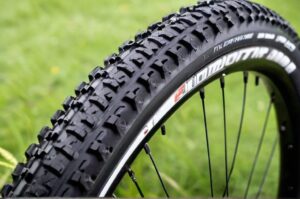Table of Contents
Introduction to Mountain Bike Multi-tools
When it comes to mountain biking, having the right gear can make all the difference in ensuring a smooth and enjoyable ride. One such indispensable piece of gear is the MTB multi-tool. This compact, versatile device is a rider’s best friend on the trail, allowing for quick fixes and adjustments without the need for a full toolbox. From minor tweaks to crucial repairs, a multi-tool can mean the difference between continuing your ride and having to cut it short.
A mountain bike multi-tool incorporates several essential functions that can address a wide range of mechanical issues you may encounter on the trail. Whether it’s adjusting your derailleur, fixing a chain, or tightening your brakes, this pocket-sized toolkit can handle it all. Carrying one is not just a matter of convenience; it’s a necessity for any serious rider who wants to be prepared for the unexpected.
In this article, we’ll walk you through the 10 essential functions that any quality MTB multi-tool should offer. We’ll delve into each function’s significance and provide insights into why these features are crucial for both seasoned riders and newbies alike.
1. Allen Wrenches (Hex Keys)
Allen wrenches, also known as hex keys, are the backbone of any MTB multi-tool. The most common sizes you’ll find are 2mm, 3mm, 4mm, 5mm, 6mm, and 8mm. These sizes cover nearly every bolt on your mountain bike, including those on your derailleurs, brakes, and handlebars. Adjusting these components is essential for fine-tuning your bike’s performance and ensuring a comfortable, safe ride.
The importance of Allen wrenches can’t be overstated. They are used for various adjustments such as aligning your derailleurs, tweaking your brake settings, and setting your handlebar height and angle. Ensuring compatibility with a range of bike brands and models, a good set of hex keys will give you the leverage and precision you need to make on-the-fly adjustments. Look for wrenches that are well-made and offer good leverage points to make your job easier.
2. Screwdrivers
Screwdrivers, both Phillips and flathead, are another crucial component of a reliable mountain bike multi-tool. These tools come in handy particularly for adjusting the limit screws on your derailleur. Properly setting these screws ensures that your chain shifts smoothly across the gears without jumping off, which can be a major frustration and safety issue on the trail.
High-quality screwdrivers are vital for making minor adjustments and quick fixes when you’re out riding. The durability and design of the tips are important; they need to withstand repeated use without stripping screws. Look for tools that have strong, ergonomic handles to make these adjustments as straightforward as possible.
3. Torx Wrenches
As mountain bike technology advances, the Torx wrench has become a must-have in any multi-tool. Common sizes include T25 and T30, which are frequently used in modern bike components, especially for disc brakes. While similar to traditional screwdrivers and hex keys, Torx wrenches offer superior grip and torque, reducing the likelihood of stripping bolts.
Durability and precision are the hallmarks of a good Torx wrench. These tools are specifically designed to fit and turn Torx bolts with ease, making them invaluable when dealing with high-torque applications like disc brakes. This added reliability is particularly important for the safety and longevity of your bike’s components, making a quality Torx wrench an indispensable part of your multi-tool arsenal.
4. Chain Tool
The chain tool, often the unsung hero of a multi-tool, allows you to break and rejoin chains—a function that’s crucial for long rides or when you’re far from home. Whether you encounter a broken link or need to remove a damaged section, a chain tool can get you back on track quickly. This tool is especially vital for remote trails where assistance might be hours away.
When looking for a chain tool, compatibility with various chain types (such as single speed, 11-speed, etc.) is essential. Features like replaceable pins and ease of use make the difference between a smooth repair and a frustrating one. A good chain tool is straightforward to use and robust enough to handle the demands of mountain biking.
5. Tire Levers
Tire levers are small but mighty tools essential for removing and replacing tires. Durability is a key feature to look out for—flimsy levers can snap, leaving you stranded. The best tire levers are made from high-strength materials like nylon or metal and are designed to handle the tough sidewalls of mountain bike tires.
The compact design of tire levers makes them easy to carry in your multi-tool. Techniques for using tire levers effectively include starting opposite the valve to provide maximum leverage and working your way around the tire evenly to avoid damaging the tube. Mastery of these tools ensures you can quickly address flat tires and continue your ride without lengthy delays.
6. Spoke Wrench
The spoke wrench is a small yet invaluable tool for keeping your wheels true. Maintaining the correct spoke tension is vital for avoiding wobbly wheels and ensuring a smooth ride. Common sizes you’ll need include 3.2mm, 3.3mm, and 3.5mm, which cover most spoke nipples found on mountain bikes.
Using a spoke wrench allows you to fix a wobbly wheel quickly. The process involves adjusting the tension of individual spokes to bring the wheel back into alignment. Recognizing when your spokes need adjustment—such as after a hard ride or a significant impact—can prevent further damage and prolong the life of your wheels.
7. Chain Hook
A chain hook simplifies the usually frustrating process of chain installation and repair by holding the chain ends together, freeing up your hands to focus on reconnecting the chain effectively. This small tool can significantly reduce the time and hassle involved in chain repairs, making it an essential addition to any MTB multi-tool.
The chain hook is lightweight and easy to store, making it ideal for carrying during solo rides where every bit of convenience helps. Its importance becomes evident in situations where you’re dealing with stubborn or greasy chains and need a third hand to keep everything in place. This tool’s simplicity belies its usefulness, proving indispensable for any rider performing their own repairs.
8. Tire Plug Tool
For riders using tubeless tires, a tire plug tool is a must-have for quick puncture repairs. This tool allows you to insert a plug into the puncture, ensuring you can get back to riding with minimal downtime. Being able to repair punctures on the trail quickly is one of the significant advantages of tubeless setups, making a tire plug tool a key feature in any MTB multi-tool.
Compatibility with various plug types is crucial, as not all plugs work well with all tires. Understanding the best practices for using a tire plug tool, such as adequately cleaning the puncture site and ensuring the plug is securely inserted, can make your repairs more effective. Always practice using your tire plug tool before heading out to ensure you’re confident in performing this emergency repair.
9. CO2 Inflator Head
The CO2 inflator head is an incredibly efficient tool for inflating tires swiftly on the trail. By using CO2 cartridges, you can achieve optimal tire pressure in a matter of seconds, which is invaluable when time is of the essence. Ensuring that the inflator head is compatible with the standard CO2 cartridges is vital for a smooth operation.
Practicing how to use a CO2 inflator head before you need it can prevent mistakes and ensure safety. Misuse of CO2 cartridges can lead to under-inflation or even a burst tire. Safety tips include double-checking the cartridge’s connection to the inflator head and ensuring you follow the manufacturer’s instructions. This tool’s convenience and speed can’t be overstated, making it a critical addition to your mountain biking gear.
10. Knife or Cutting Tool
Having a small knife or cutting tool integrated into your MTB multi-tool can be incredibly useful. This tool can cut tape, zip ties, tire plugs, and more, adding significant general utility to your kit. Whether you’re making quick repairs or need to change out gear, a cutting tool is invaluable.
Safety features and design considerations are important when choosing a knife or cutting tool. Look for models with locking mechanisms to prevent accidental closure and ergonomic designs to ensure safe handling. Weighing the pros and cons of integrated versus standalone tools will help you select the best option for your needs. An integrated tool is convenient and ensures you’ll always have it on hand, while a standalone tool may offer better durability and functionality.
Conclusion
In conclusion, a well-rounded MTB multi-tool featuring Allen wrenches, screwdrivers, Torx wrenches, a chain tool, tire levers, a spoke wrench, a chain hook, a tire plug tool, a CO2 inflator head, and a knife is crucial for any mountain biker. Investing in a high-quality multi-tool ensures you’re prepared for most common mechanical issues you might face on the trail, boosting both your preparedness and riding confidence.
So, next time you head out, make sure your multi-tool is stocked with these 10 essential functions. Feel free to share your favorite multi-tool or any additional tips in the comments below. Your insights can make a big difference for other riders looking to make the most out of their mountain biking adventures.
“`







